It is not only the Roman gods who are remembered in history, but the canon of Roman goddesses is equally important, being no less powerful or popular than their male counterparts.
They are indeed the epitome of female strength. Mythological stories of the deities play a significant role in different religious rituals in Rome.
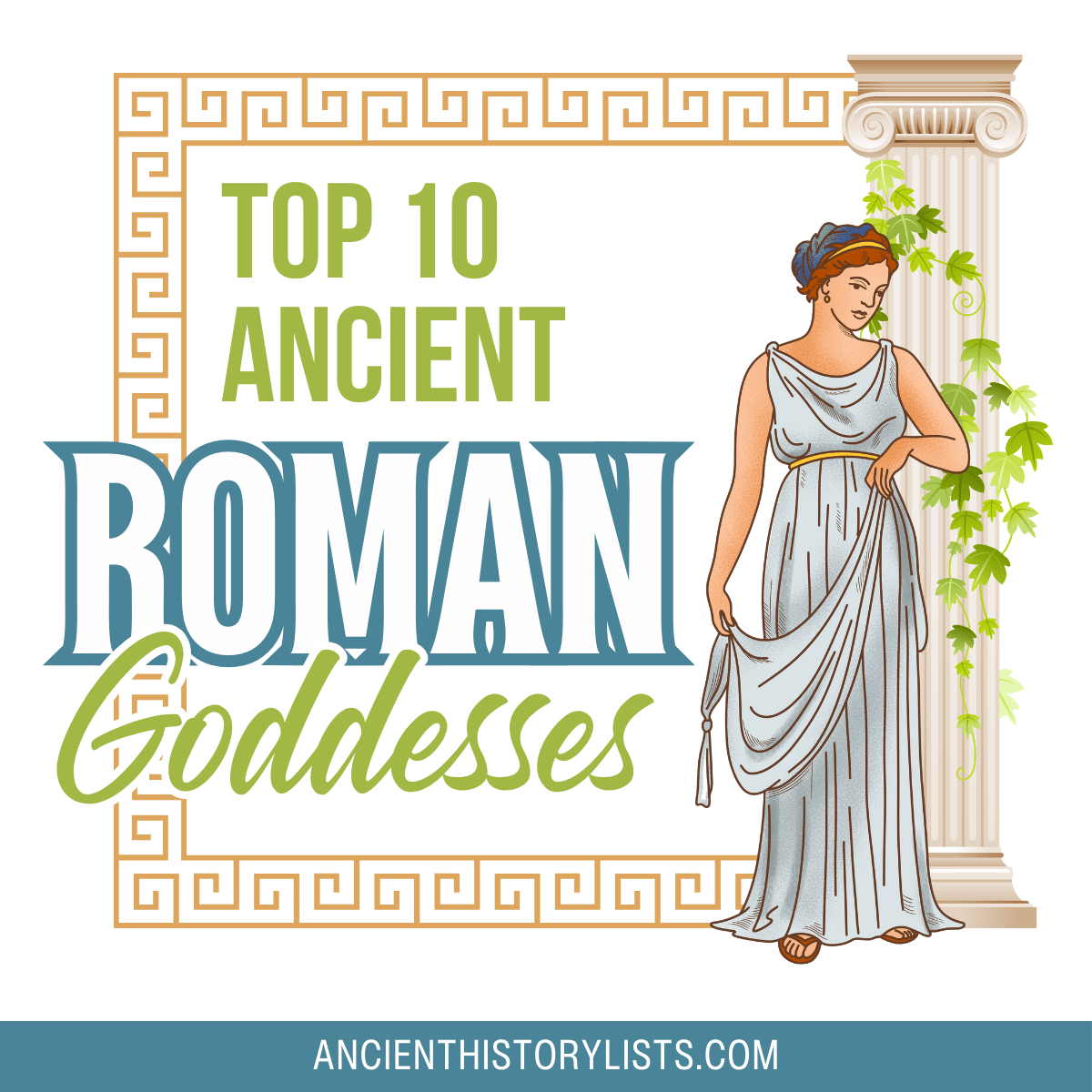
Ancient Rome is full of spirituality, but we generally hear more about the Roman gods than the female deities. So now is the time for you to add some information about the Roman goddesses to your treasure box of knowledge. Their divine nature, their strength, and their beauty will surely leave you mesmerized!
Here is a list of the top 10 Roman goddesses:
1. Juno, Queen of Goddesses
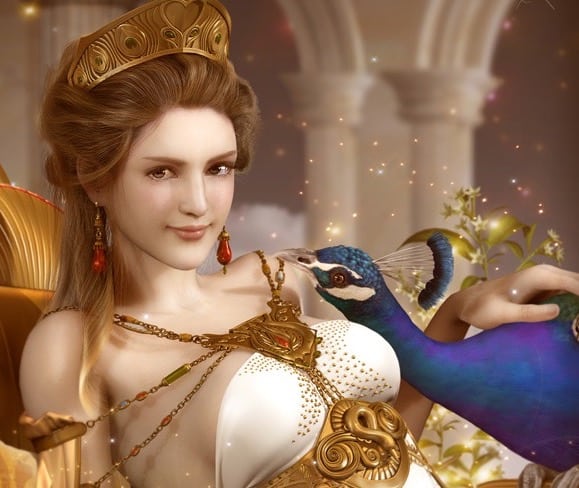
The Roman equivalent of Hera, the Greek queen of goddesses, Juno is considered as counsellor and protector of the state. The daughter of Saturn, Juno is both the sister and the wife of the king of gods, Jupiter.
She is the mother of the god of war and god of fire, Mars. Also the goddess of marriage and childbirth, Juno connects the ideas of vitality, energy and eternal youthfulness. As the patron goddess of the Roman Empire, she was named “regina” or queen and was a member of the Capitolina Triad in Rome, along with Jupiter and Minerva.
Wearing a diadem on her head, Juno is a majestic figure and she is often pictured dressed in a goatskin cloak sitting with a peacock, which is her main symbol.
Her traditional appearance gives her a warlike aspect. Also known as Juno Moneta, she is seen as guiding the finances of the Roman Empire. Furthermore, the month of June is named after her.
Her theology is one of the most complex and this is the reason why she has many significant and diverse epithets, names, and titles, each having a different meaning. Some of these are Juno Lucina, Juno Caprotina, Juno Curitis, Juno Sospita, and Lucina.
2. Minerva, Goddess of Wisdom
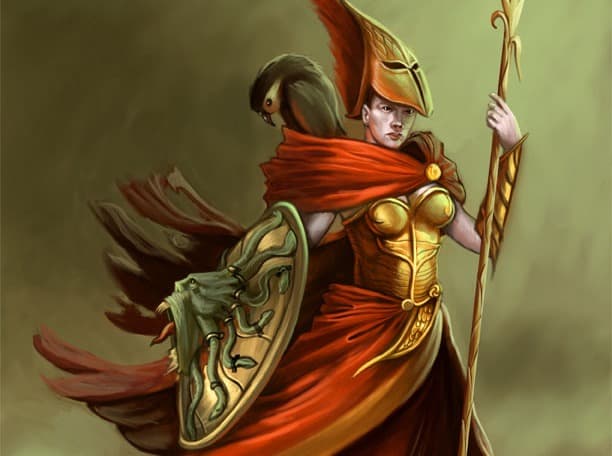
Minerva is the goddess of wisdom, commerce, poetry, handicrafts, and even strategic warfare.
Due to her artistic powers, Minerva was part of Ovid’s Metamorphoses. From the second century BC, Minerva has been seen as the equivalent of the Greek goddess Athena. After impregnating Metis, Jupiter recollected the prophecy of his child overthrowing him.
Due to the fear of his unborn child eventually surpassing him in power, he swallowed Metis, and before Minerva was born she is said to have caused Jupiter a constant headache from within. To get rid of the pain, Vulcan split Jupiter’s head open with a hammer and from it emerged Minerva as an adult bearing full armor and weaponry.
Minerva was also known as Minerva Medica meaning goddess of medicine and physicians. The coinage of many different emperors had her figure on the reverse side. She is often depicted holding an owl and a spear.
3. Flora, Goddess of Flowers and Spring
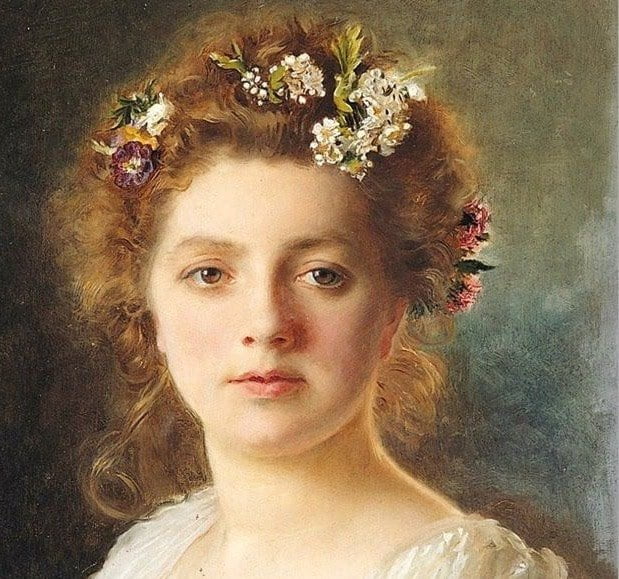
Representing the beauty of flowers and nature, Flora’s association with spring made her an important Roman goddess.
Not only is she connected with the season of rejuvenation but also with budding youth. Chloris is her Greek counterpart. Flora’s name is derived from the Latin word flos meaning flower.
The Romans used to celebrate the renewal of the cycle of life, flowers, and drinking with the festival of Floralia which took place on April 28 and May 3 and was first started in 240 BC.
May 23 was the date of another festival in her name, the Rose Festival. Flora also became a prominent figure among Renaissance humanists, but she is said not to have enjoyed having such a powerful image.
4. Vesta, Virgin Goddess of Family, Home, and Hearth
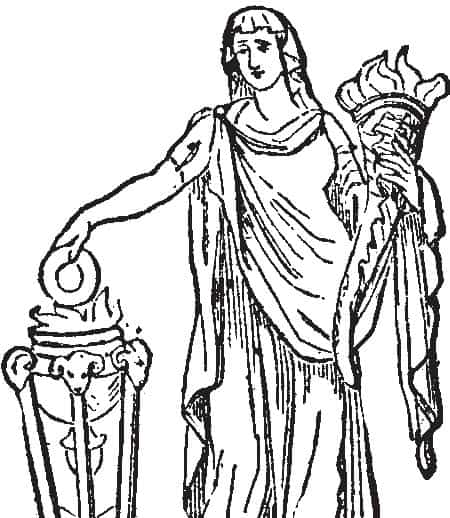
Just like Hestia in the Greek pantheon, Vesta was rarely depicted in human form, instead being represented by the fire of her temples. Only the priestesses, known as Vestas, were allowed into her temples and myth has it that her followers could be miraculously impregnated.
She was the daughter of Saturn and Ops, and sister of Jupiter, Neptune, Juno, Pluto, and Ceres. Her worship first began in Lavinium, which was also the first Trojan settlement.
As well as being known for her purity and virginity, she was also the mother who granted fertility. Despite her purity, she is often contradictorily associated with the phallus. Ovid said that she is the same as the earth, as they both have perennial fire in common.
5. Venus, Goddess of Love, Desire, Sex, and Prosperity
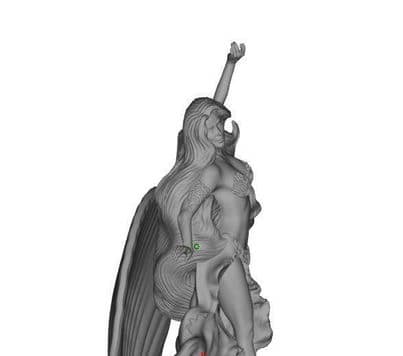
Venus, one of the central deities of Rome, is the mother of Cupid and Aneas. The Romans adopted the mythology and iconography of her Greek equivalent, Aphrodite. Embodying sex, charm, and allure, Venus has been described as the most original creation in the Roman pantheon.
She is said to have absorbed the male essence which results in the union of the opposite sexes and mutual affection. Her counterparts are Vulcan and Mars. She is seen as a watery symbol who maintains the balance of life.
Venus is of the utmost importance in Roman mythology, and her followers celebrated many festivals throughout the year. Veneralia was celebrated on April 1 and was dedicated to both Venus (seen as Venus Verticordia, the changer of hearts) and Fortuna Virilis, the goddess of fortune.
Next, Vinalia Urbana was celebrated on April 23 which was a wine festival dedicated to both Venus and Jupiter. Last but not least was Vinalia Rustica on August 19. This was originally a rustic Latin harvest festival celebrating wine, food, and fertility.
6. Ceres, Goddess of Agriculture and Motherly Relationships
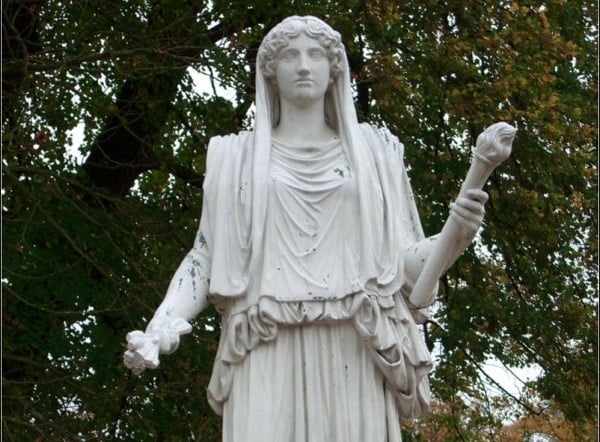
Ceres’ love of and service to mankind is the equivalent of the Greek goddess, Demeter. As the goddess of cultivation, she taught people not only how to grow crops but also how to grow as a person.
She gave the gift of agriculture to mankind. This benevolent goddess was the only goddess to be involved in the day-to-day lives of ordinary people. She was the protector of maidenhood, womanhood, and motherhood.
She shared a dual relationship with the god of law and order, Jupiter. She was both a sister and a wife to him and together they had a daughter Proserpina, whom she is said to have lived her life through. Ceres was worshipped on Aventine Hill, one of the seven hills of ancient Rome, where her temple stood.
One of the festivals dedicated to Ceres, the Cerealia, was celebrated on April 19. Another special time of the year for the goddess of agriculture and fertility was Ambarvalia, a Roman agricultural fertility rite which took place at the end of May. In fact, she is the only one of Rome’s many agricultural deities who is named as part of the Dii Consentes, the Roman equivalent of the Greek’s Twelve Olympians, their leading deities.
7. Diana, Goddess of the Hunt and the Moon
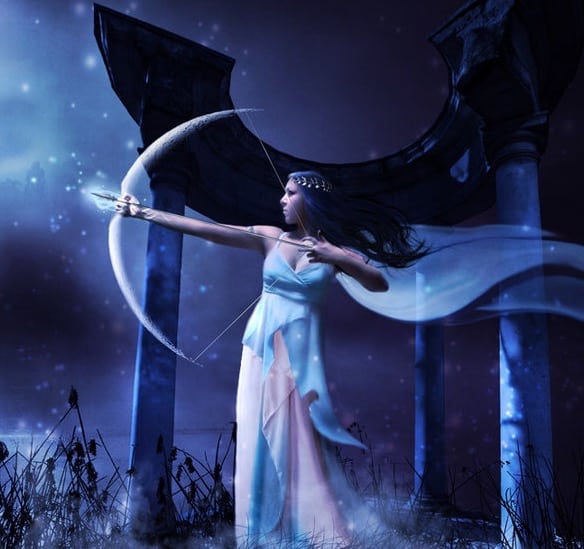
Diana’s association with woodlands and the animals gave her the power to communicate with animals and also control them. She was widely worshiped in ancient Rome and was revered in pagan religions such as stregheria and Roman neopaganism.
She was one of the three maiden goddesses along with Minerva and Vesta and is closely associated with childbirth and women. Like the other two, she swore never to get married. She was the daughter of Jupiter and Latona and was born on the island of Delos with her twin brother Apollo. As a goddess, she depicts the heavenly world with her sovereignty, impassibility, and supremacy.
Her celestial nature is showcased in her connection with virginity, inaccessibility, light, and her preference for dwelling in sacred woods and high mountains. She is often seen wearing a short tunic and hunting boots, carrying a quiver on her shoulder, and accompanied by either hunting dogs or a deer.
Moreover, she is always portrayed as being young and beautiful. She was a universal deity in Latin, and many sanctuaries were dedicated to her worship. King Servius Tullius, in his devotion to her, created her shrine on Aventine Hill. She has also been the subject of many artworks and dramas.
8. Salacia, Goddess of Salt Water
The female divinity ruling the world of the oceans, Salacia was the wife of Neptune as indicated by the ancient writer, Varro. The god of the sea, Neptune, wanted to marry her, but she loved another, and managed to flee when he proposed to her.
She hid in the Atlantic Ocean to preserve her virginity. Neptune then sent one of his dolphins to persuade her to come back and be his queen. Salacia finally agreed to the marriage proposal, leaving Neptune so happy that he awarded the dolphin a separate place in the heavens, now forming a constellation called Delphinus.
Salacia is portrayed as a beautiful nymph wearing a crown of seaweed. She is either seen sitting beside Neptune or driving in a vibrant pearl shell chariot with him, drawn by seahorses and dolphins. The goddess of salt water is dressed in regal robes and has nets in her long hair. She is the personification of calmness.
Her name is derived from the Latin sal, meaning salt, a reference to the seas and oceans that she rules.
9. Luna, the Embodiment of the Moon
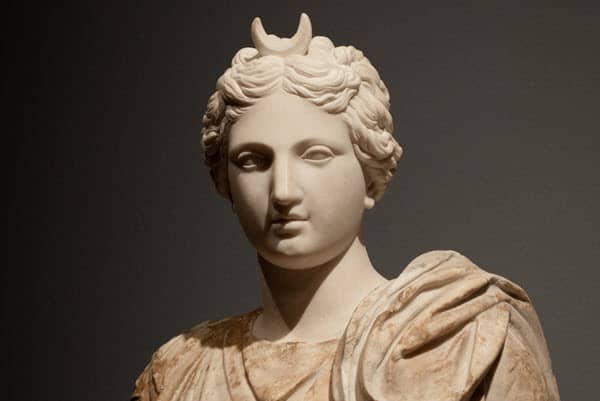
Luna is considered as a female counterpart of Sol, the sun god. Luna, along with Proserpina and Hecate, is part of the Diva Triformis or the Roman triple goddess.
In Roman art, she is represented with a crescent and a chariot with two yokes. Varro distinguished Luna and Sol from the invisible gods. She was among the deities whom the philosopher Macrobius propounded as secret protectors of Rome.
During the imperial era, both Luna and Sol were seen to reflect Roman rule in their flourishing religion which was synonymous with tranquility and peace. Selene is her Greek counterpart and the myths related to Luna are drawn from the goddess Selene.
Her temple on Aventine Hill, built in the sixth century BC, was destroyed in the great fire of Rome during Nero’s reign.
10. Fortuna, the Goddess of Fortune
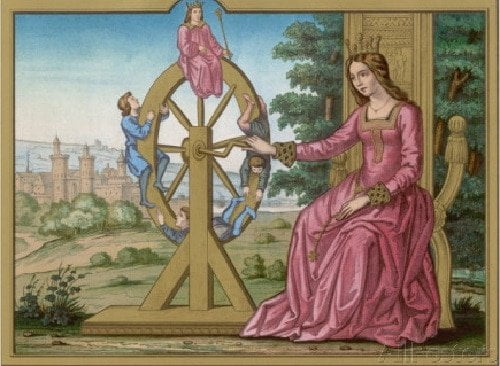
As the personification of fortune, Fortuna is said to bring either good or bad luck and was widely worshiped by the Romans. Portrayed as blind and veiled, she represents justice and is also the goddess of fate. She was as bountiful as her father, Jupiter.
Fortuna is depicted holding a cornucopia, or a horn of plenty, in one hand from which all good things flowed in abundance. This side represented her ability to bestow prosperity on her followers. In the other hand was a ship’s rudder which indicated her power to control fate. She could also be seen enthroned, with the same attributes, but with a wheel built into the chair to represent the ups and downs of fortune.
Conclusion
Just like the Roman gods, there are Roman goddesses to represent every possible thing. With their heavenly beauty, these goddesses have the power to control events around the world.
They have the power to protect the righteous and punish those who do wrong. Roman mythology is complex when it comes to its multi-layered relations among the deities and Rome is thought to have the greatest pantheon of gods.